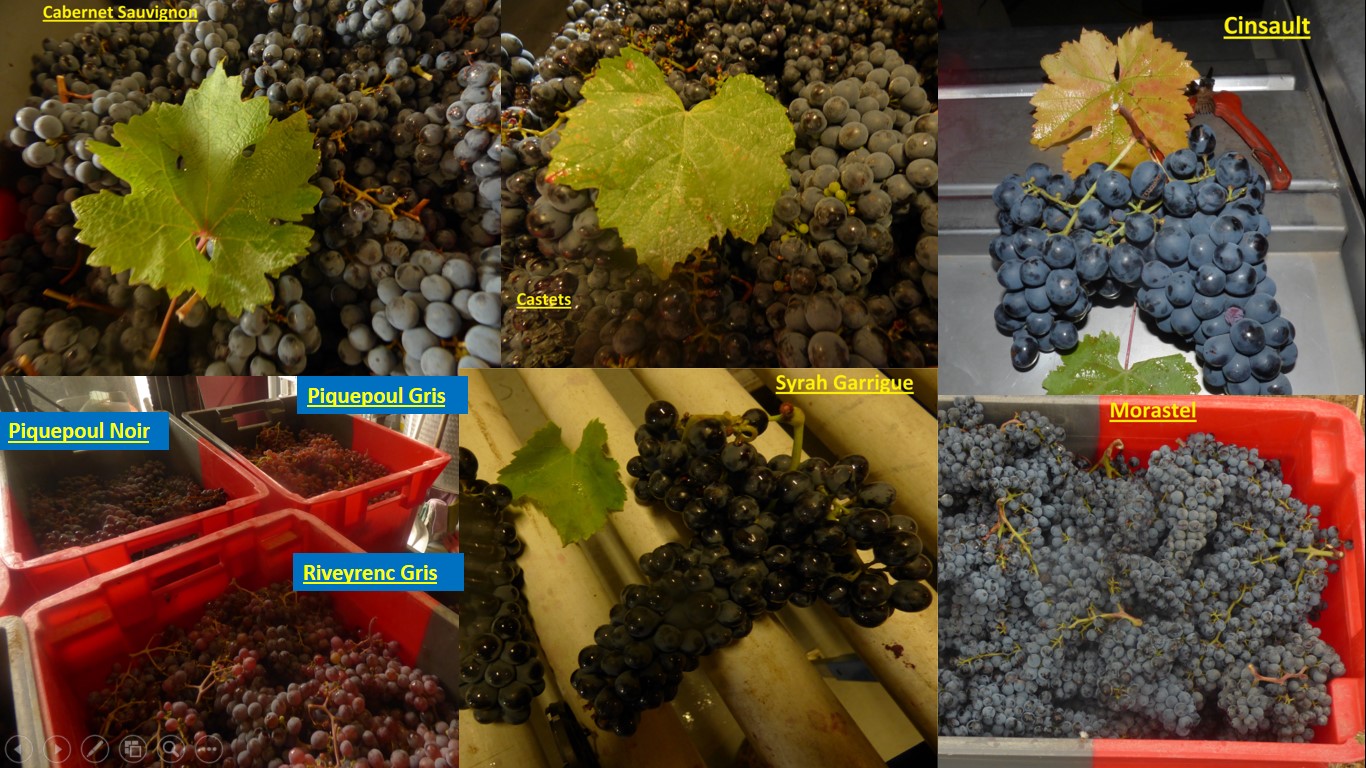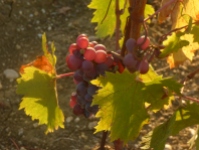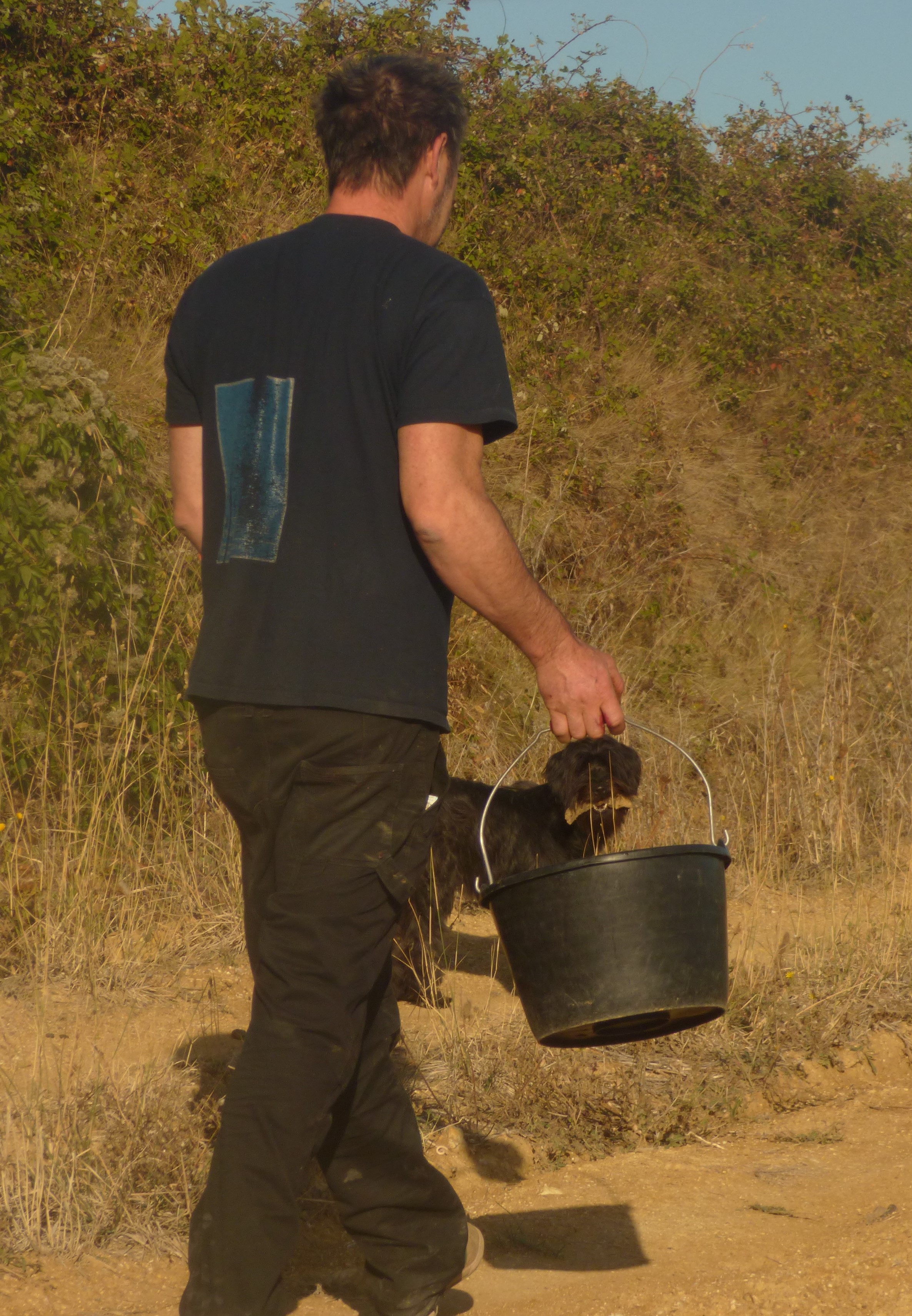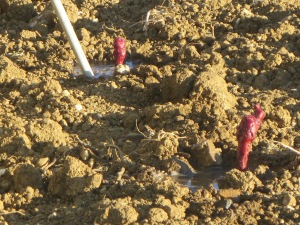
Day 3 was all about grapes from one vineyard so Day 4, September 4th, was a contrast. Muscat from Peilhan, the remaining Syrah in Ste. Suzanne (Metaierie) plus a few rows of Grenache from there, a few rows of the Syrah of Segrairals were all picked.
The highlight for me, however, was picking Rome. This is my favourite vineyard, I think most readers will know that by now. The semi seclusion, surrounding trees, wildlife and collection of vines in gobelet (free standing) all make this one of my favourite places on Earth, just look at the photo under the heading.
The variety and nature of the vines make them more interesting to pick, they are individual with bunches spread around them rather than the more uniform growth in most vines trained on wires. This makes it slower work but the rewards of Rome make the work pleasurable. Jeff will blend these grapes with some of the others to make a cuvée as Rome, like most of the parcels, was producing rich, concentrated juice but small quantities due to the drought.
Tony Boris et Alain Alain, Boris Fabrice
Picking there did give me the opportunity to get to know better the 2019 team. Fabrice, a long-time friend of Jeff’s, I have got to know a little over the years but it is good to have more time with him. Alain, Tony, Boris are new friends. One of the benefits and joys of each vendange is getting to know new people. Most of these guys are spending their holidays as volunteers, they are all good company, work hard and are shaping into one of the best teams I have known in my six years here.

Day 5 brought another interesting harvest. Riveyrenc is a traditional, but rare, grape variety in the Languedoc. Thierry Navarre in St. Chinian has done much to maintain its profile and deserves much credit for his very good wine. In March 2015 Jeff planted Riveyrenc Noir and Riveyrenc Gris along with other rare varieties such as Terret Noir and Blanc, Piquepoul Noir and Gris, Morastel. I was there that hot day and four years later these vines are producing really good grapes already.

We picked around 37 cases of Riveyrenc and, I’m happy to report, the grapes were much juicier than anything we had picked so far. It was a joy to see juice in the cases as we sorted them back at the cellar, up to now the cases have been very dry. The Terret Noir and Blanc were rather less generous in quantity but were added to boost the quantity. That these vines are producing such good fruit so young promises well for the future.
Riveyrenc Gris Terret Noir and Blanc
Syrah and Grenache (just a few rows of each) from La Garrigue were also picked in the morning. The afternoon brought the first Cinsault of the year, from Segrairals. Cinsault grapes are commonly big and juicy, the vintage means that is not totally the case this year but the idea was to bring in some low alcohol fruit to blend with other varieties, mission accomplished.

I also helped Jeff carry out a débourbage of the white and rosé, that is separating the juice from the solids which remained to clarify the wine as it begins its fermentation. The colourful residue always looks interesting, but it has no place in a fresh wine.

Rome, juicy grapes, cellar work, rare varieties – it’s getting better all the time.

Jour 4 Jour 5



















































































